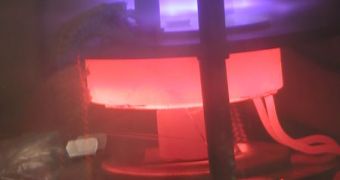X-rays have been identified as one of the most energetic forms of light in the Universe over the years, and their power has been harnessed to create scanners in airports and radiotherapy. However, it's only now that their true power is starting to be tapped into, researchers announce. Scientists at the University of North Carolina (UNC), in Chapel Hill, have recently revealed that they may have discovered a method of allowing for real-time, 3-dimensional X-ray scans, by generating them using carbon nanotubes, Nature News informs.
“If you look at current imaging technology, technically very little has changed since Wilhelm Rontgen discovered X-rays more than 100 years ago,” UNC Materials Scientist Otto Zhou, who has been one of the main researchers behind the new study, explains. He and colleagues in his team found that carbon nanotubes could be potent sources of radiation when their own X-ray machine broke down. “It didn't take long to show that nanotubes could generate X-rays in principle. What has taken time is turning this idea into a viable technology,” he adds.
Zhou says that, in the average X-ray machine, a tungsten filament releases some electrons, which are then accelerated inside a tube until they finally hit a metal target. The large force of the blast creates X-rays, which are then fired at the area of the patient's body that needs studying. But this type of approach makes investigation techniques such as computed tomography (CT) very complex, as the entire system needs to revolve around the patient in order to get a better view of their bodies.
What is revolutionary about using carbon nanotubes in this process is their ability to generate electrons. When a voltage is applied to them, a quantum effect known as field emissions allows for one electron to be generated, which amplifies the electric field around the tip of the structure. This makes it particularly easy to emit the particle. But the real innovation is the layout of the device. Rather than having a moving arm or ring blasting radiation, the new apparatus is designed as a 3-dimensional array of carbon nanotube sensors, which do not fire in unison.
Rather, they get stimulated via applying voltages in a roundabout pattern, meaning that, if you could see the X-rays, they would look like a vertical beam moving around in a circle. “Electronic switching can create a scanning beam without requiring any mechanical motion of the apparatus,” Zhou explains. “Current radiotherapy methods do their best to deliver radiation to tumors, but if the patient moves, it can miss the target. But imaging with nanotube X-rays while the patient is actually undergoing treatment will minimize damage to tissue surrounding the tumor,” UNC Medical Physicist Sha Chang concludes.

 14 DAY TRIAL //
14 DAY TRIAL //